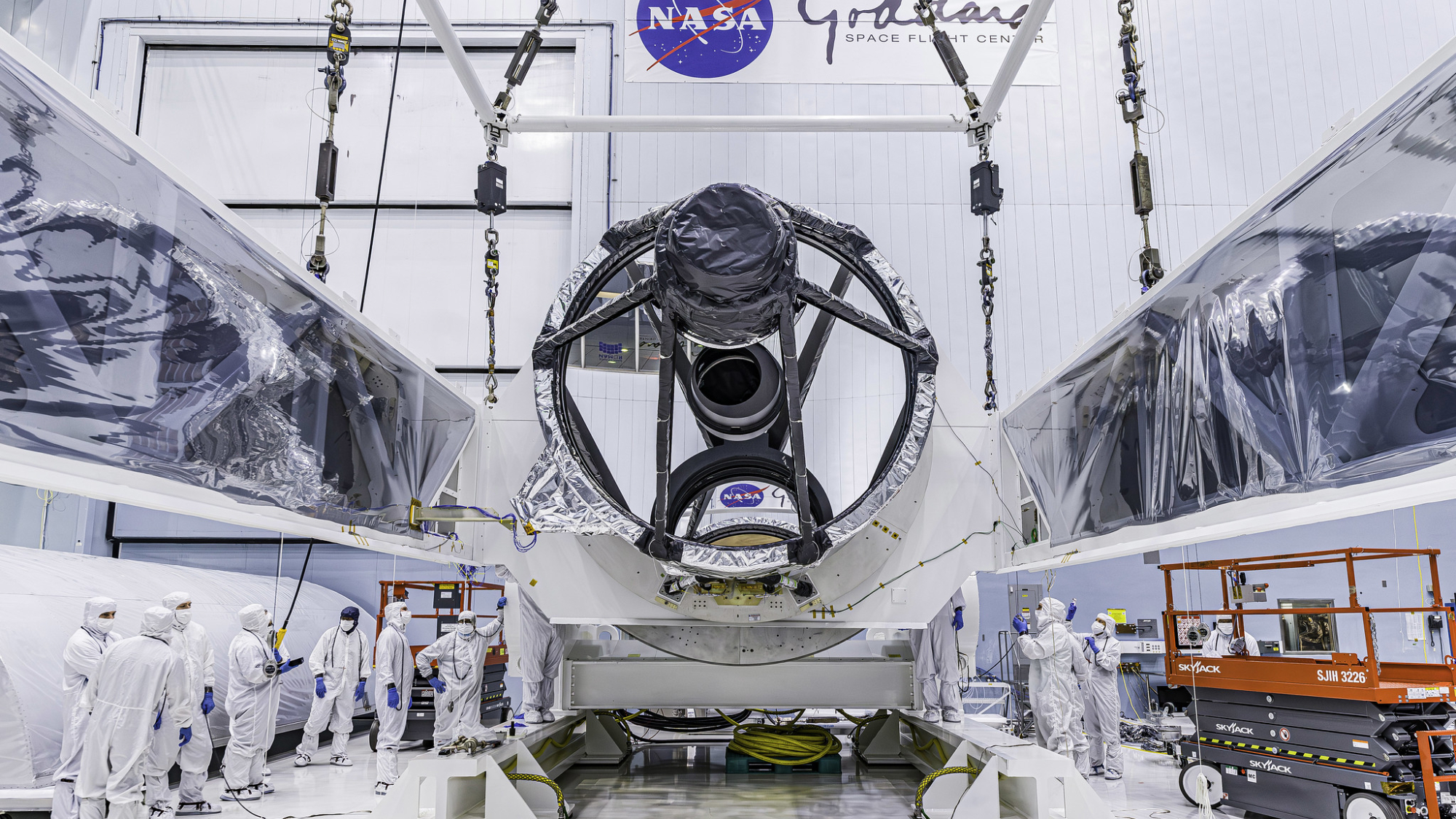Scientists accidentally discover Earth's inner core is less solid than expected
The new research could help us better understand our planet's thermal and magnetic fields.

For a long time, scientists thought the Earth's inner core was a solid ball of metal, sort of like a planet within a planet that sits some 3,000 miles (4,828 kilometers) below the surface.
However, researchers from the University of Southern Carolina (USC) now say they discovered — almost by accident — that the Earth's inner core may be much more malleable.
John Vidale, Dean's Professor of Earth Sciences at the USC Dornsife College of Letters, Arts and Sciences, who was the new study's principal investigator, said in a statement that the researchers "didn't set out to define the physical nature of the inner core."
Originally, the USC scientists were tracking how our planet's inner core speed of rotation is decreasing, because previous research found that the core is slowing down. The method for charting this involves studying seismic waveform data from earthquakes.
The team used the data from 121 repeating earthquakes between 1991 and 2024; the chosen events happened across 42 different locations near the uninhabited South Sandwich Islands that are situated north of Antarctica.

The USC scientists were studying the waveforms when they came upon some surprising data that contradicted our previous understanding of Earth's inner core. A dataset of waveforms held some uncharacteristic properties the team wasn't expecting to see.
"As I was analyzing multiple decades' worth of seismograms, one dataset of seismic waves curiously stood out from the rest," Vidale said. "Later on, I’d realize I was staring at evidence the inner core is not solid."
Get the Space.com Newsletter
Breaking space news, the latest updates on rocket launches, skywatching events and more!
Once Vidale's team improved the resolution technique, they found the seismic waveforms "represented additional physical activity of the inner core." So, the data led them to believe that the inner core might be moving around a bit, rather than staying completely solid.
"What we ended up discovering is evidence that the near surface of Earth's inner core undergoes structural change," Vidale said.
According to the researchers, the structural change may relate to the inner core's slowing and could lead to a better understanding of the Earth's thermal and magnetic fields. What's more, the change might have "minutely altered the length of a day."
The research was published on Feb. 10 in the journal Nature Geoscience.
Join our Space Forums to keep talking space on the latest missions, night sky and more! And if you have a news tip, correction or comment, let us know at: community@space.com.
Julian Dossett is a freelance writer living in Santa Fe, New Mexico. He primarily covers the rocket industry and space exploration and, in addition to science writing, contributes travel stories to New Mexico Magazine. In 2022 and 2024, his travel writing earned IRMA Awards. Previously, he worked as a staff writer at CNET. He graduated from Texas State University in San Marcos in 2011 with a B.A. in philosophy. He owns a large collection of sci-fi pulp magazines from the 1960s.
-
Helio Once again, more science produces improved science. They thought they had solid evidence, until someone looked closer. ;)Reply -
billslugg The core has a certain angular momentum. How can that change? Maybe some fluid is pushing sideways on one of its surface bumps.Reply -
Helio Reply
I never thought it could be all that solid with temperatures estimated to be as high as 6000K. I guess the pressure is too high for it to be a gas, but the outer core should be pretty, well, "soft to the touch". ;)billslugg said:The core has a certain angular momentum. How can that change? Maybe some fluid is pushing sideways on one of its surface bumps.
Make that 6000C. Wiki stated the core temp. to be around 5700K, then stated, " Recent measurements suggest it could be as high as 6,000 °C." Ug. -
YetAnotherBob Reply
It's a semi-solid, make that like molasses. It's still subject to tides. those have a slowing action until the planet is tide locked. So the earth is slowing down because of tides. Both solar and lunar. It is complicated by the mass above it and is a complex thing to actually calculate.billslugg said:The core has a certain angular momentum. How can that change? Maybe some fluid is pushing sideways on one of its surface bumps. -
Unclear Engineer If you consider how the ocean tides work to slow the Earth's rotation and increase the Moon's orbital speed, it is probably similar, but not as pronounced, in the other layers of the Earth, with the layers farthest from the center receiving the greatest effects. So, all layers are expected to slow down, but not all at the same rate. See https://science.howstuffworks.com/environmental/earth/geology/rising-rock-earths-crust-has-its-own-tides.htm for a discussion of tides in the crust.Reply
(Yes, I know that "speeding up the Moon" actually ends up increasing its orbital radius and slowing its speed down along its orbital path. That is not contrary to what I posted in the paragraph above.) -
Helio Reply
That's a good. I can imagine that the tidal stress in the Earth, thus slowing, would occur with the outer layers of the Earth, so that the inner core would not slow as quickly thus would have an increasing relative rotation with the outer layers. This would, I assume, generate a stronger magnetic field. A larger and closer moon would be a big advantage for this, thus another argument for the likelihood for life on Earth. :)Unclear Engineer said:If you consider how the ocean tides work to slow the Earth's rotation and increase the Moon's orbital speed, it is probably similar, but not as pronounced, in the other layers of the Earth, with the layers farthest from the center receiving the greatest effects. So, all layers are expected to slow down, but not all at the same rate. -
George² It's a good thing there are coincidences, otherwise, with planning, these scientists would have discovered nothing in their entire lives. /sReply -
LemmyCaution Reply
Perhaps Wiki managed to get it backwards since 5700C just happens to be a bit shy of 6000K.Helio said:I never thought it could be all that solid with temperatures estimated to be as high as 6000K. I guess the pressure is too high for it to be a gas, but the outer core should be pretty, well, "soft to the touch". ;)
Make that 6000C. Wiki stated the core temp. to be around 5700K, then stated, " Recent measurements suggest it could be as high as 6,000 °C." Ug. -
Helio Reply
Yeah, something happened there. Perhaps they meant to say 6000K since they were commenting on a revised core temp. We could look it up, but either temperature is high enough to make the point that the core is not quite "solid".LemmyCaution said:Perhaps Wiki managed to get it backwards since 5700C just happens to be a bit shy of 6000K. -
Classical Motion I don’t think gravity converges matter to a point, I think it forms a shell like structure, not a ball. And the gravity at the center is less than the gravity of the shell. Allowing a less dense center. Allowing a relative velocity.Reply
Gravity might be completely null at the very center point. And an inverse density gradient from the center to the shell. Upside down gradient.
The Earth’s crust seems to be saturated with super heated water. Water might even be a large proportion of our mantle. Hot water and various compounds make ions. If one polarity of ions becomes more aligned than the other, this might constitute current with the rotation of the earth. This current might generate our M field. And explain why at times it flips. The other ions becoming more aligned.
Or any net charge of ions in earth’s solution could do the same thing. And explain an M field reversal.
Our M field from wet chemistry. Perhaps.










